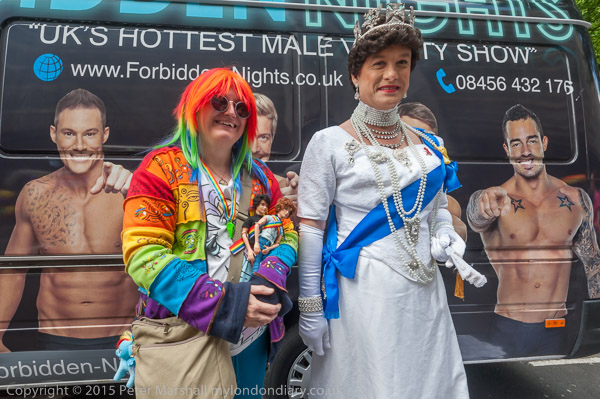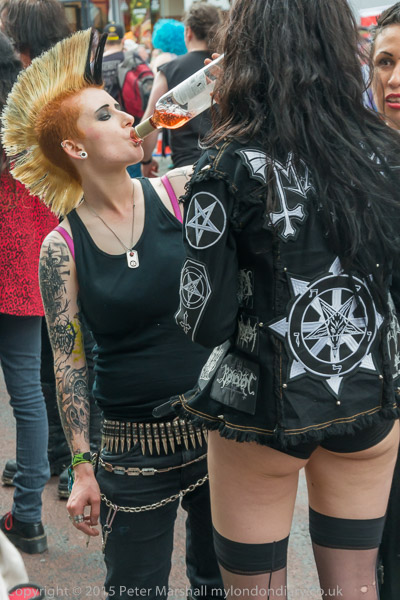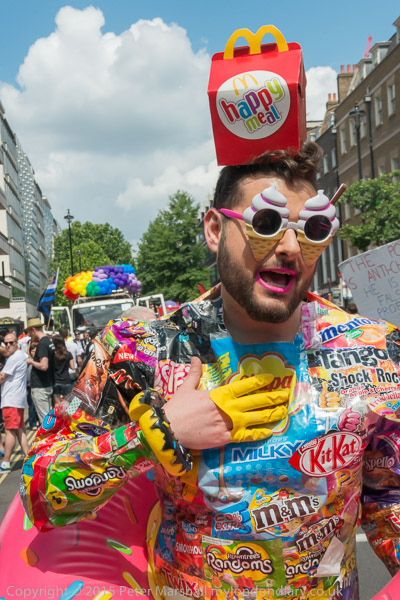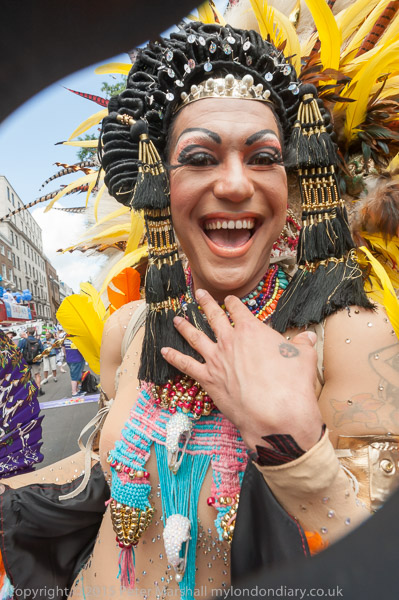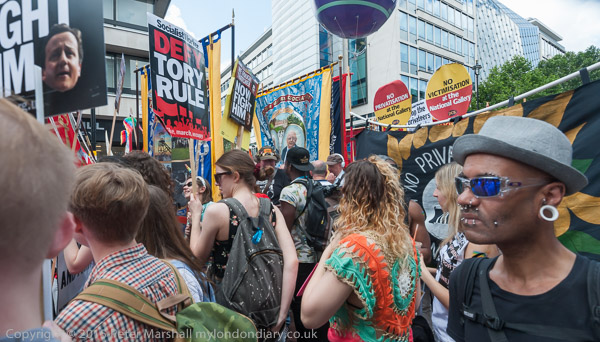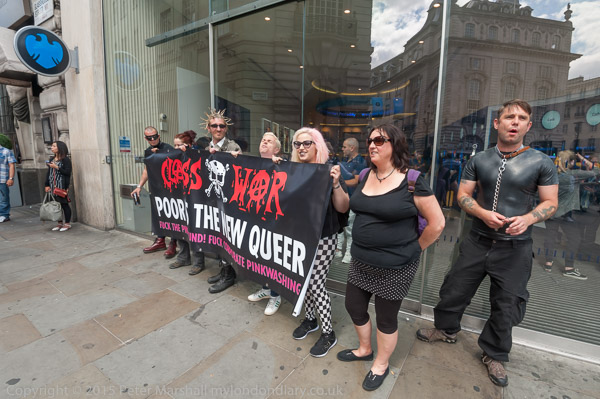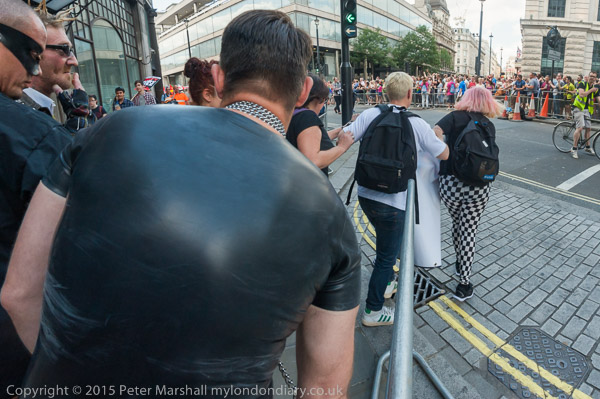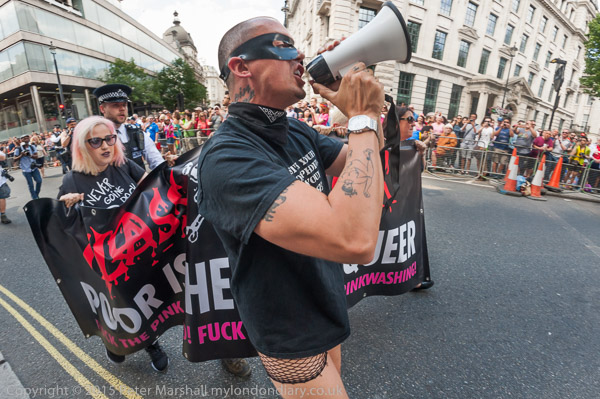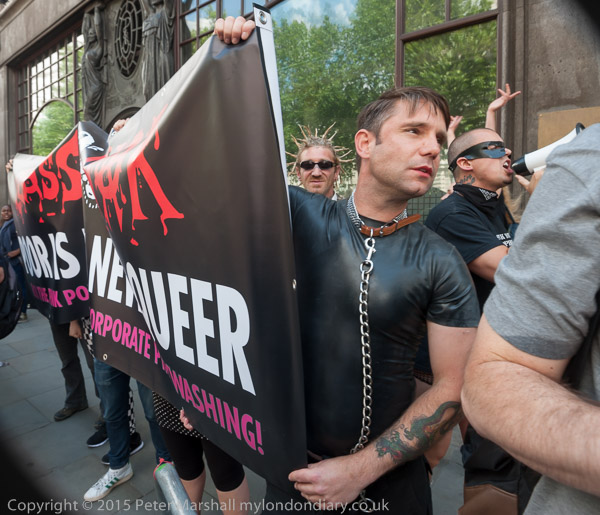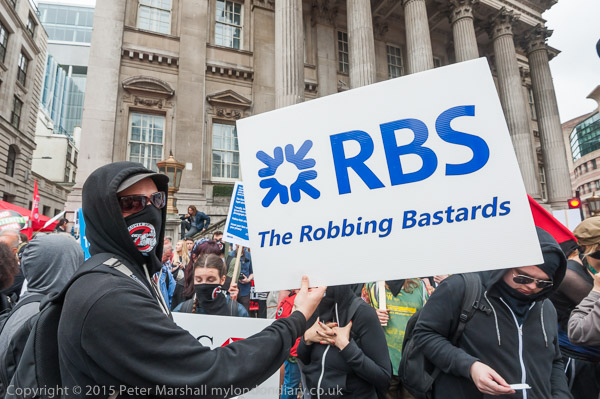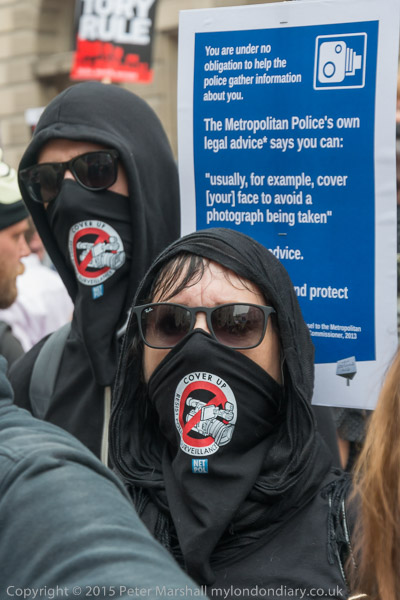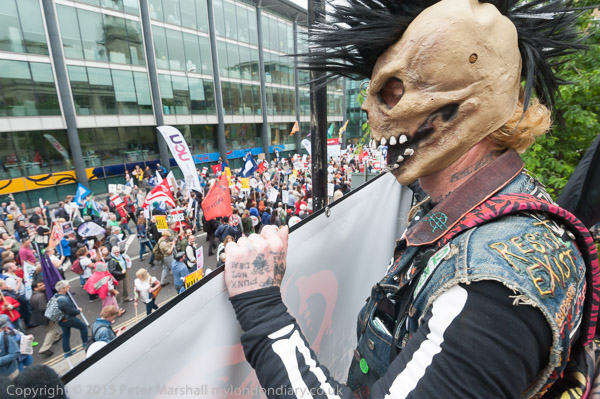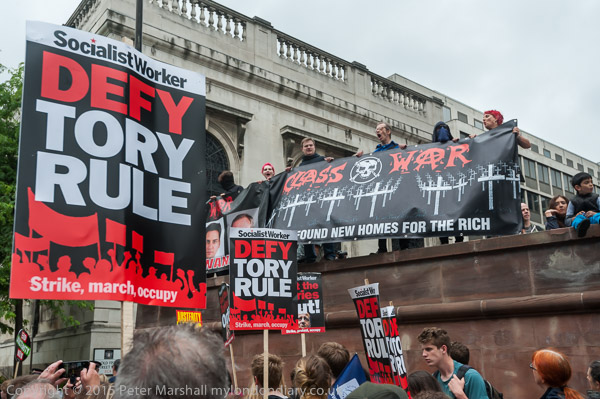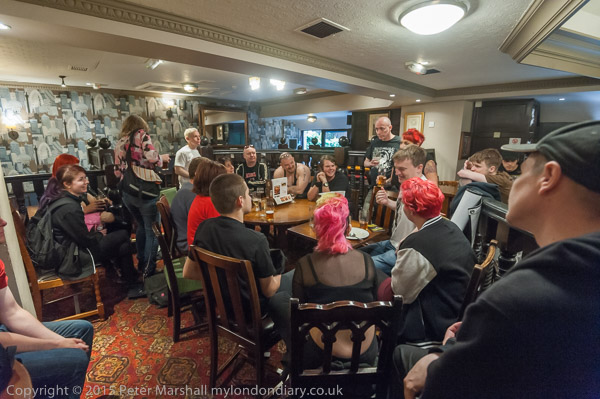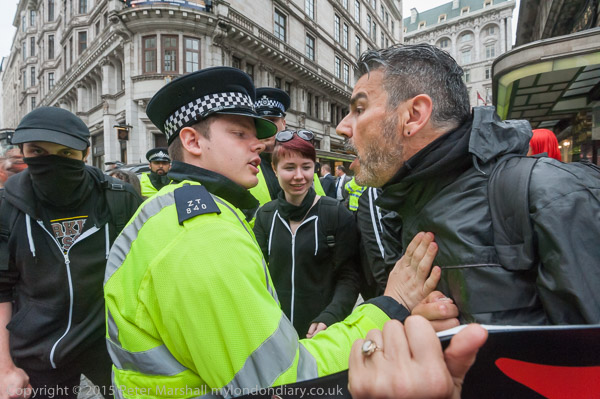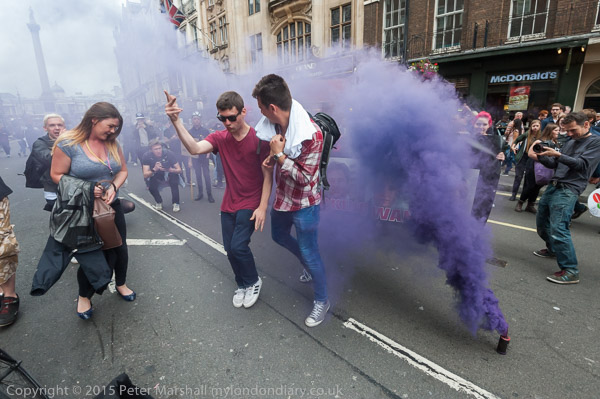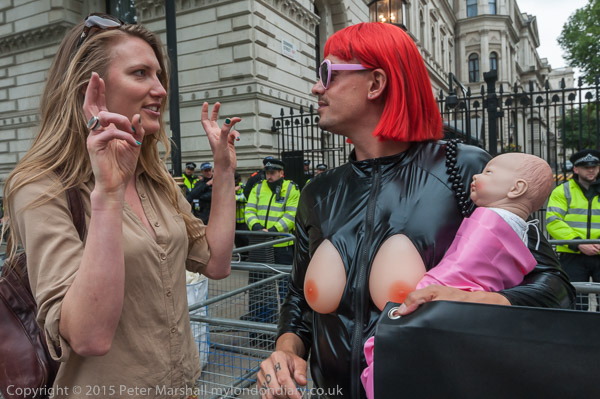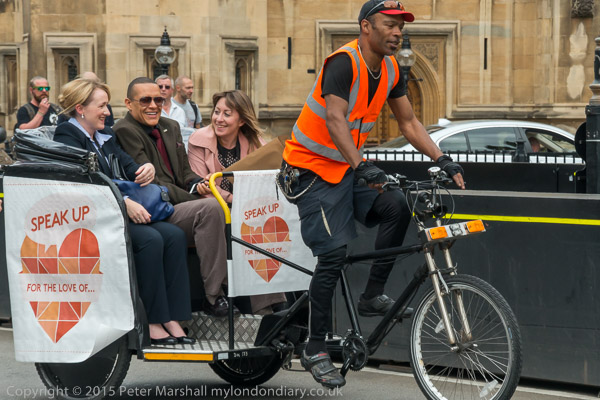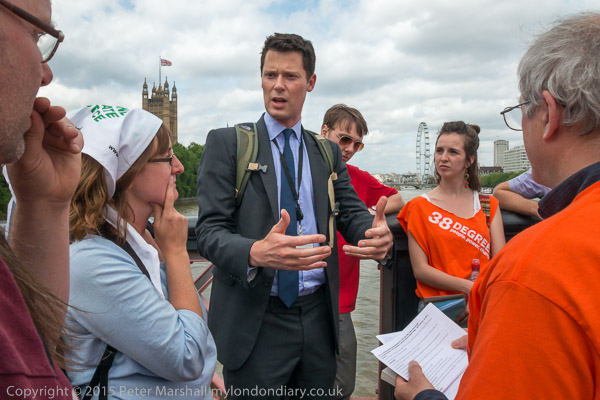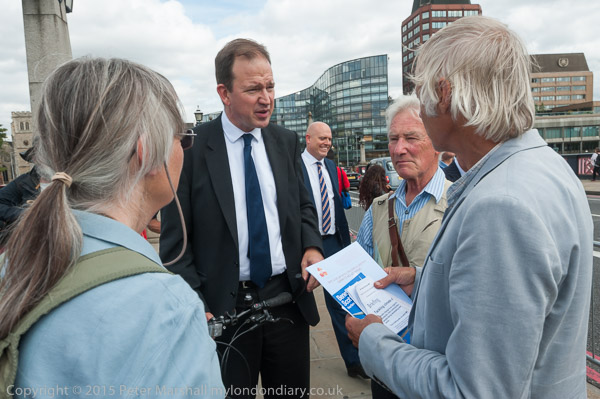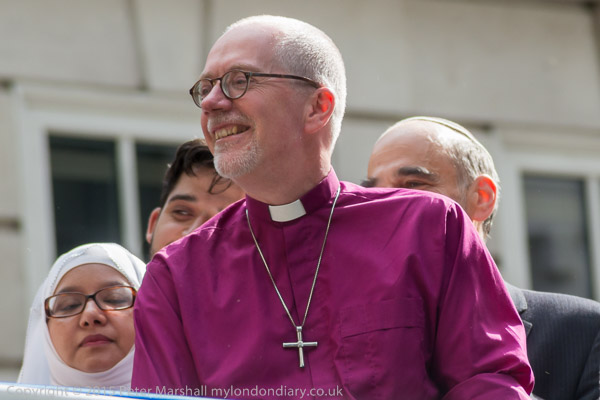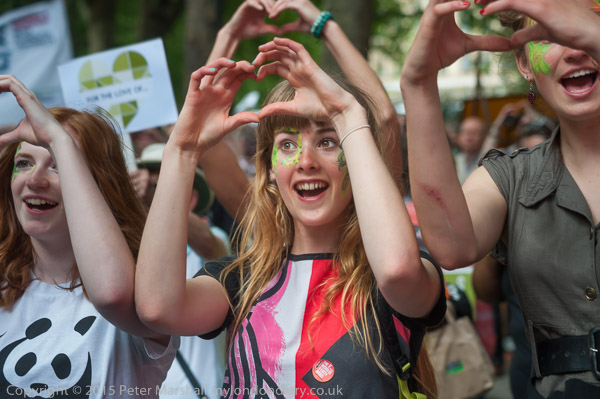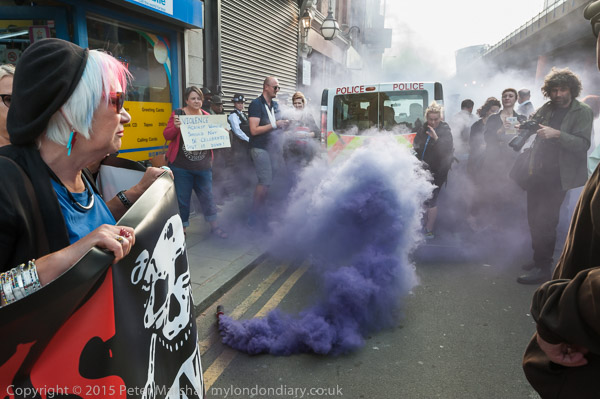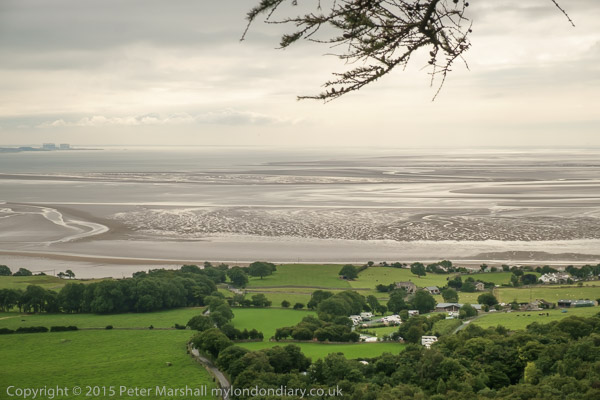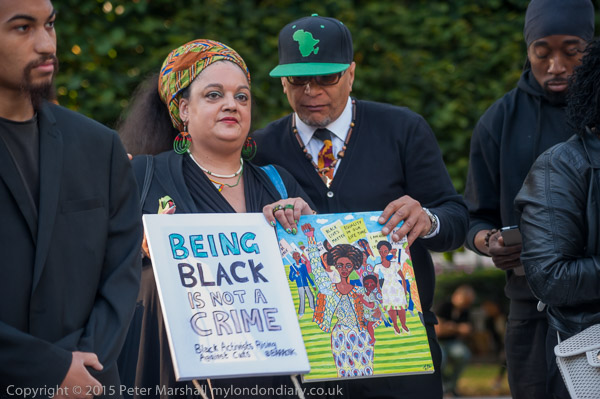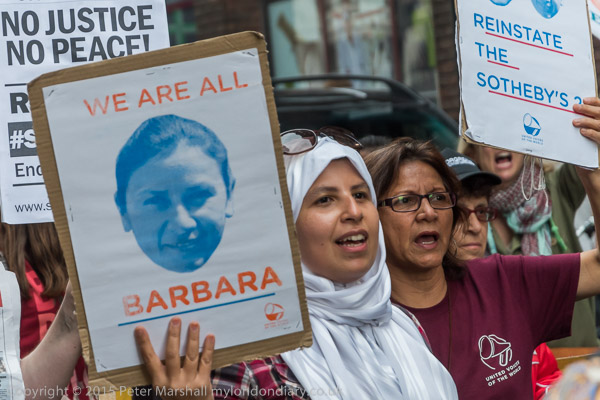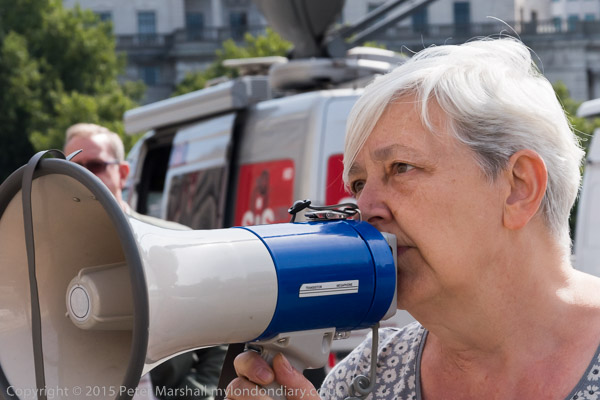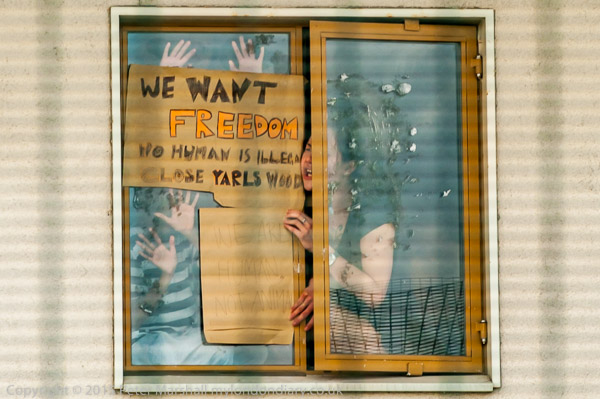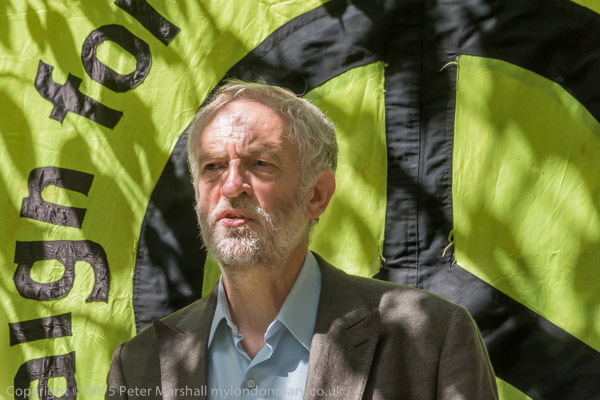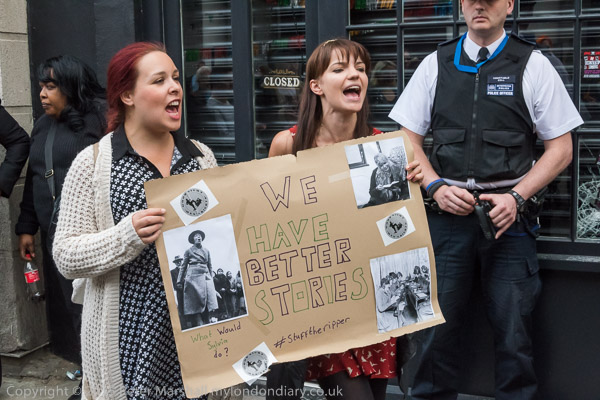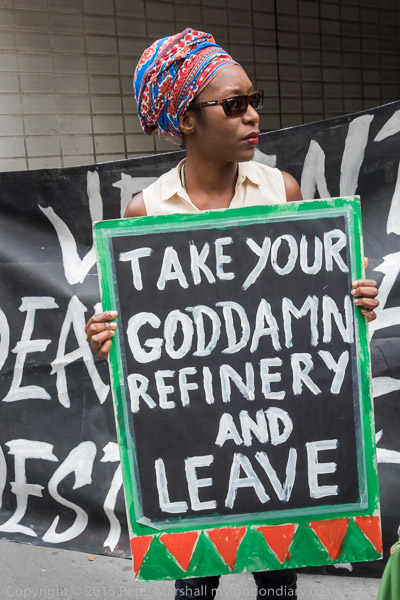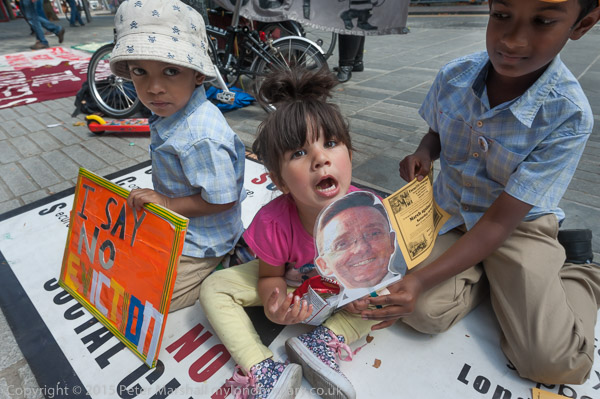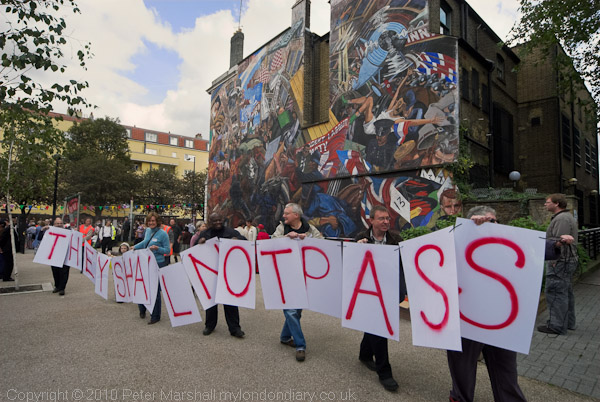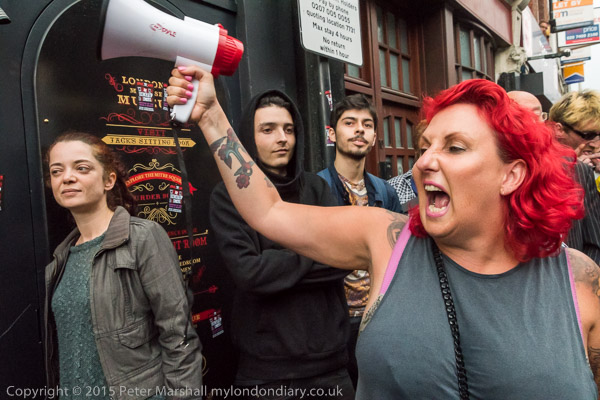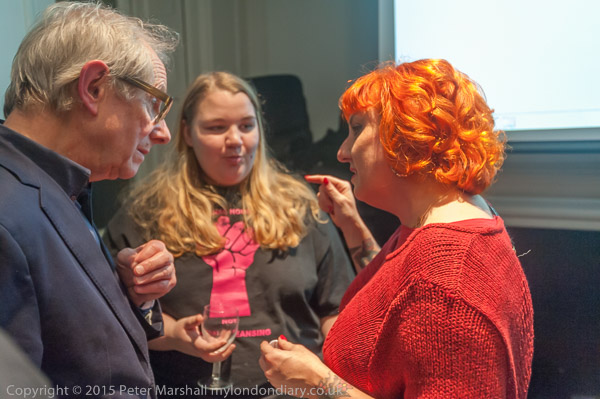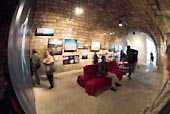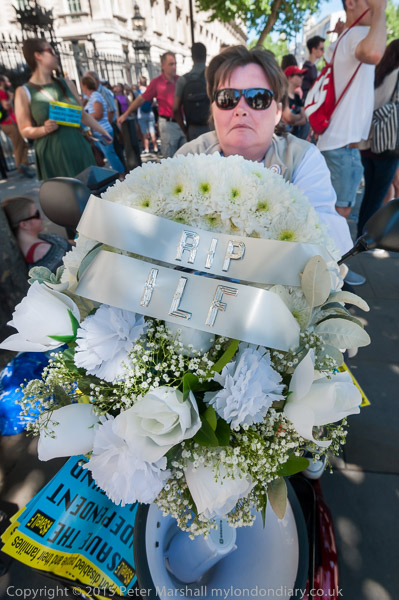
Paula Peters of DPAC, carrying the ‘RIP ILF’ wreath on her mobility scooter above, had a few minutes earlier written a message for Iain Duncan Smith on an incontinence pad : ‘I want dignity – I want to be treated as a human being – You wear one of these I. D. S. They are awful‘.
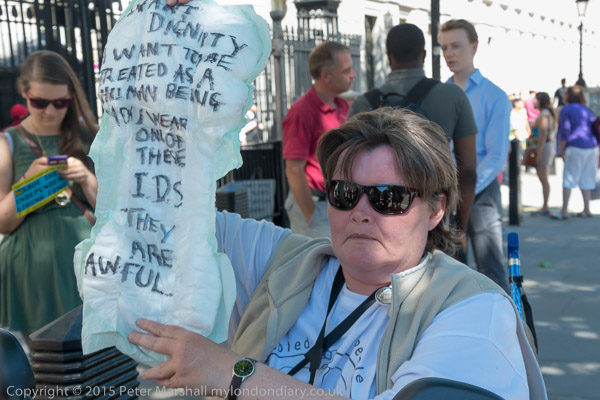
When IDS began his programme of ‘welfare reforms’ he obviously decided that the disabled would be an easy target, their disabilities making them unable to stand up against the cuts in the benefits that had been gained over the years of campaigning. It was clearly a mistake, and one that those campaigns over the years for equality for the disabled should have warned him about.
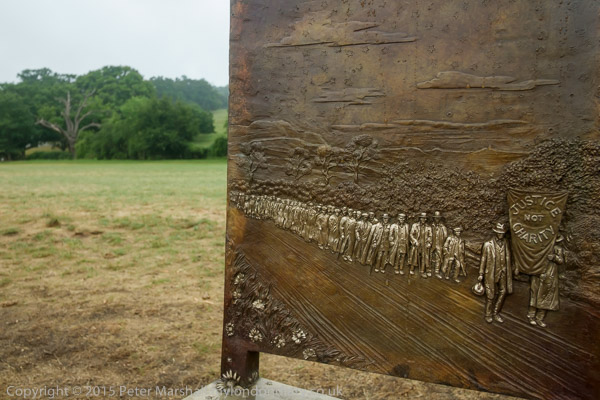
Disabled People Against Cuts (DPAC) and other groups like Black Triangle aren’t the first groups of disabled people to stick up for their rights. One of the chairs in Hew Locke‘s The Jurors artwork at Runnymede depicts the 1920 march to a rally in Trafalgar Square from Leeds, Manchester and Newport behind a banner reading ‘Justice not charity‘ and the same slogan was used for protest marches in the 1980s and 1990s. The Disabled People’s Direct Action Network, DAN, was formed in 1993, and at least one of DPAC’s current activists has the tattoos to show his membership.
In the past few years, DPAC have been at the spearhead of protests against the cuts and against unfair ways of cutting the support to the disabled, such as the Atos administered computer-based tests of work capability, now taken over by Maximus (see Maximus – Same Circus, Different Clowns.)
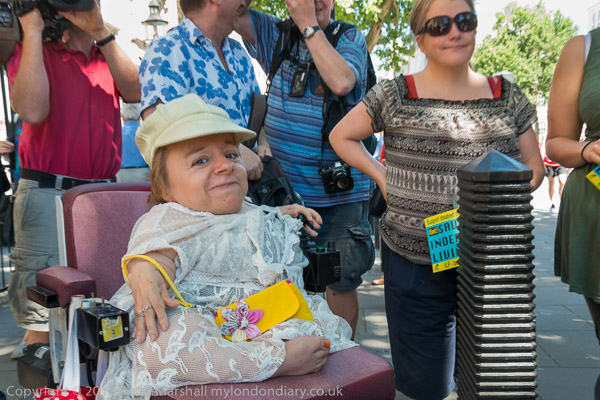
Sophie Partridge, disabled Actor, Writer & Workshop artist
The Independent Living Fund was set up in 1988 to provide support for severely disabled people who need intensive, high-cost care to combat social exclusion on the grounds of disability. It could provide them with personal assistants so they could continue to live in their own homes, and for many of them to work and have a social life. Funded by the Department for Work and Pensions it was run as an independent public body, and supported around 19,000 disabled people at an average annual cost of around £17,000 per year – around 60% of the average cost of a place in residential care.
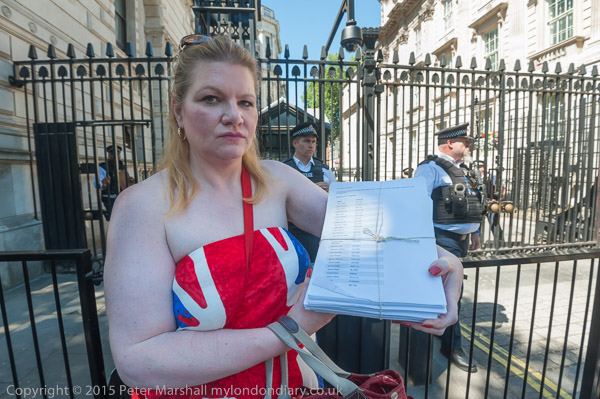
The petition to Downing St
The government’s idea was to shift that cost from central to local government, which it was engaged in savagely cutting, but to do so without providing any ring-fenced funding. In practice this is likely to lead to many of those on ILF being given dangerously low levels of support – those notorious 15 minute calls by care workers – by cash-strapped local councils leaving the disabled unable to take part in normal life, those working being unable to continue, and the kind of indignities that will leave them for long periods of the day and night in incontinence pads, not because they are incontinent, but because there is no one to help them reach a toilet.
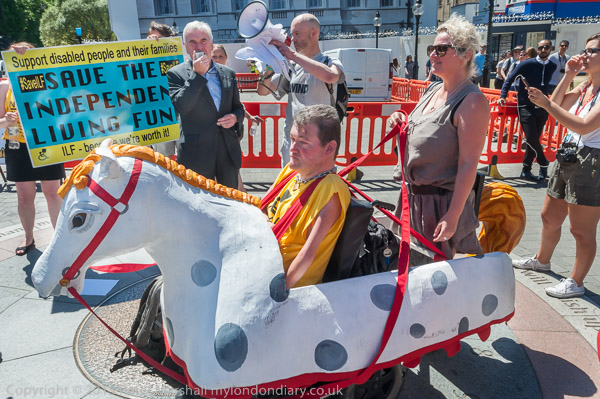
John McDonnell MP speaking and John Kelly in Schimmel, the equine star and proud battle horse of the Threepenny Opera
Possibly part of the motivation for the government decision to close the scheme made in 2010 (when it closed to new applicants) was that providing support to the disabled did enable them to protest. The fight to keep the ILF was a long one, both on the streets and in the courts, with the court of appeal ruling in 2013 that the Minister for Disabled People had breached equality duties when deciding to close the ILF. But in the end they could only delay the truly evil day, and the ILF ended on June 30th 2015
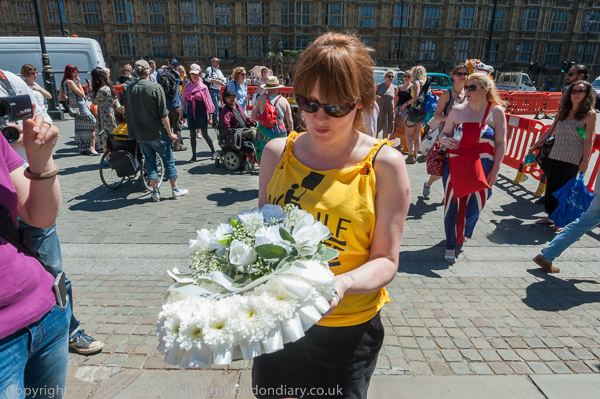
The police at Downing St rather surprisingly accepted the petition that was delivered for David Cameron, but would not take the ILF wreath, which was laid instead opposite Parliament in Old Palace Yard.
More pictures at DPAC’s ILF Closing Ceremony on My London Diary.
